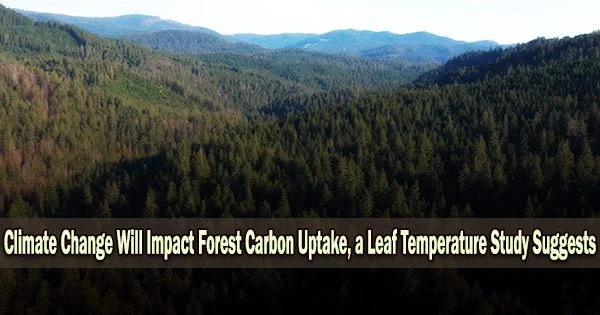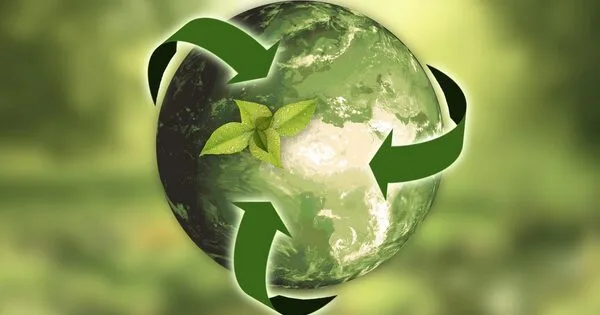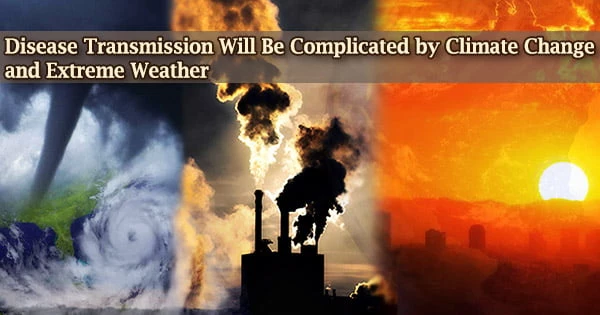According to a recent study from Oregon State University, leaves in forest canopies are unable to lower their internal temperatures below the ambient temperature. This suggests that in a warmer, drier climate, trees’ capacity to prevent harmful temperature increases and absorb carbon dioxide will be compromised.
According to a widely held scientific theory, canopy leaves can maintain their temperature within an ideal range for photosynthesis, the process by which green plants make their food from sunlight and carbon dioxide, contrary to the findings of an international collaboration that included researchers from various universities and government agencies.
According to lead author Chris Still of the OSU College of Forestry, whose research was published today in the Proceedings of the National Academy of Sciences, many of the world’s forests may be approaching their thermal limit for carbon uptake. This research is crucial for understanding and predicting how plants will respond to climate change.
“A hypothesis known as limited leaf homeothermy argues that through a combination of functional traits and physiological responses, leaves can keep their daytime temperature close to the best temperature for photosynthesis and below what is damaging for them,” said Still.
“Specifically, leaves should cool below air temperature at higher temperatures, typically greater than 25 or 30 degrees Celsius. That theory also implies that the impact of climate warming on forests will be partially mitigated by the leaves’ cooling response.”
Our results have big implications for understating how plants acclimate to warming, and they suggest a limited ability for canopy leaves to regulate their temperature. Our data and analyses suggest a warming climate will result in even higher canopy leaf temperatures, likely leading to reduction of carbon assimilation capacity and eventually heat damage.
Chris Still
From the Panamanian rain forest to the high-elevation tree line in Colorado, Still and colleagues used thermal imaging to examine canopy-leaf temperature at a number of well-instrumented sites in North America and Central America. They discovered that contrary to what the limited leaf homeothermy theory predicted, canopy leaves do not consistently cool below daytime air temperatures or stay within a narrow temperature range.
The devices that measure carbon, water, and energy “fluxes” exchanges between the forest and atmosphere as well as a variety of climatic factors were mounted on towers where the
“Using high-frequency, continuous thermal imaging to monitor forest canopies really changes what we can learn about how forests are dealing with the stress of rising temperatures,” said Andrew Richardson, a professor at Northern Arizona University and a co-author of the study.
“Before thermal cameras, if you wanted to measure canopy temperature you had to stick thermocouples to leaves with Band-Aids and wait until the wind pulled them off. But these cameras let us measure change 24 hours a day, seven days a week, across many seasons and years.”
According to the study, canopy leaves heat up more quickly than the surrounding air, stay warmer for the majority of the day, and only cool below air temperature in the middle to late afternoon.
According to the scientists, increased canopy leaf temperatures due to future global warming are anticipated to have a detrimental influence on forest carbon cycling and increase the probability of forest mortality.
“Leaf temperature has long been recognized as important for plant function because of its influence on carbon metabolism and water and energy exchanges,” Still said. “If canopy photosynthesis declines with increasing temperature, the ability of forests to act as a carbon sink will be reduced.”
According to Still, how leaf size fluctuates with climate and latitude as well as canopy structure has an impact on leaf temperature in various ecosystems. Large leaves are more common in warm, humid settings, while smaller leaves and higher reflectance, which improve the ability to shed heat and increase cooling, are more common in plants that grow in hot, dry conditions.
The criteria for positive net photosynthesis the rate of carbon fixation minus the rate of carbon dioxide released during plant respiration are already being approached or exceeded in a large portion of the warm, wet tropics.
“If leaves are generally warmer than the surrounding air, as our findings suggest, trees may be approaching critical thresholds of temperature stress faster than we expect,” Richardson said.
“Our results have big implications for understating how plants acclimate to warming, and they suggest a limited ability for canopy leaves to regulate their temperature,” Still added. “Our data and analyses suggest a warming climate will result in even higher canopy leaf temperatures, likely leading to reduction of carbon assimilation capacity and eventually heat damage.”
Chad Hanson and Hyojung Kwon of the OSU College of Forestry also took part in the study, as did scientists from the University of Colorado, Princeton University, the University of Pennsylvania, Florida State University, the University of California, Santa Barbara, the University of California, Irvine, NASA, the U.S. Geological Survey, Canadian Forces Base Trenton, the U.S. Forest Service’s Pacific Northwest Research Station, the Commonwealth Scientific and Industrial Research Organization of Australia, and Los Alamos National Laboratory.
The National Science Foundation supported this research.
















